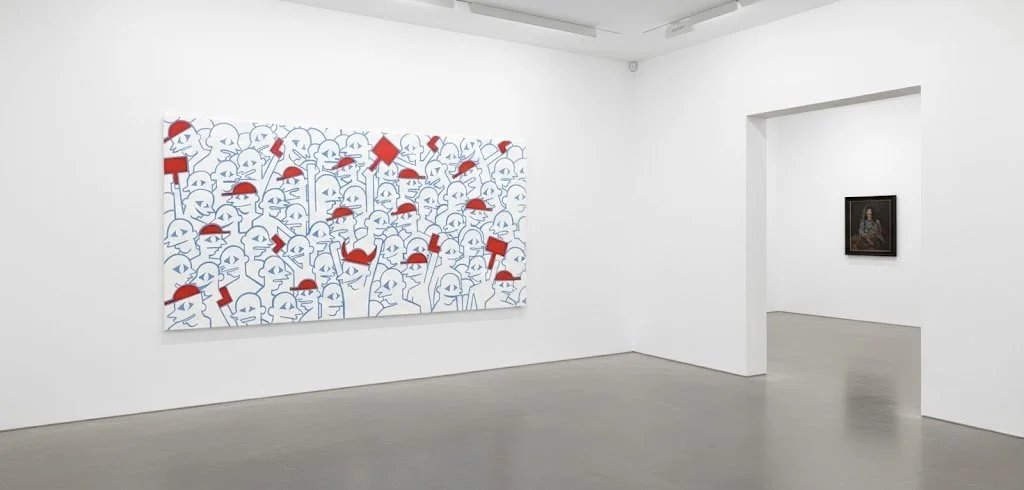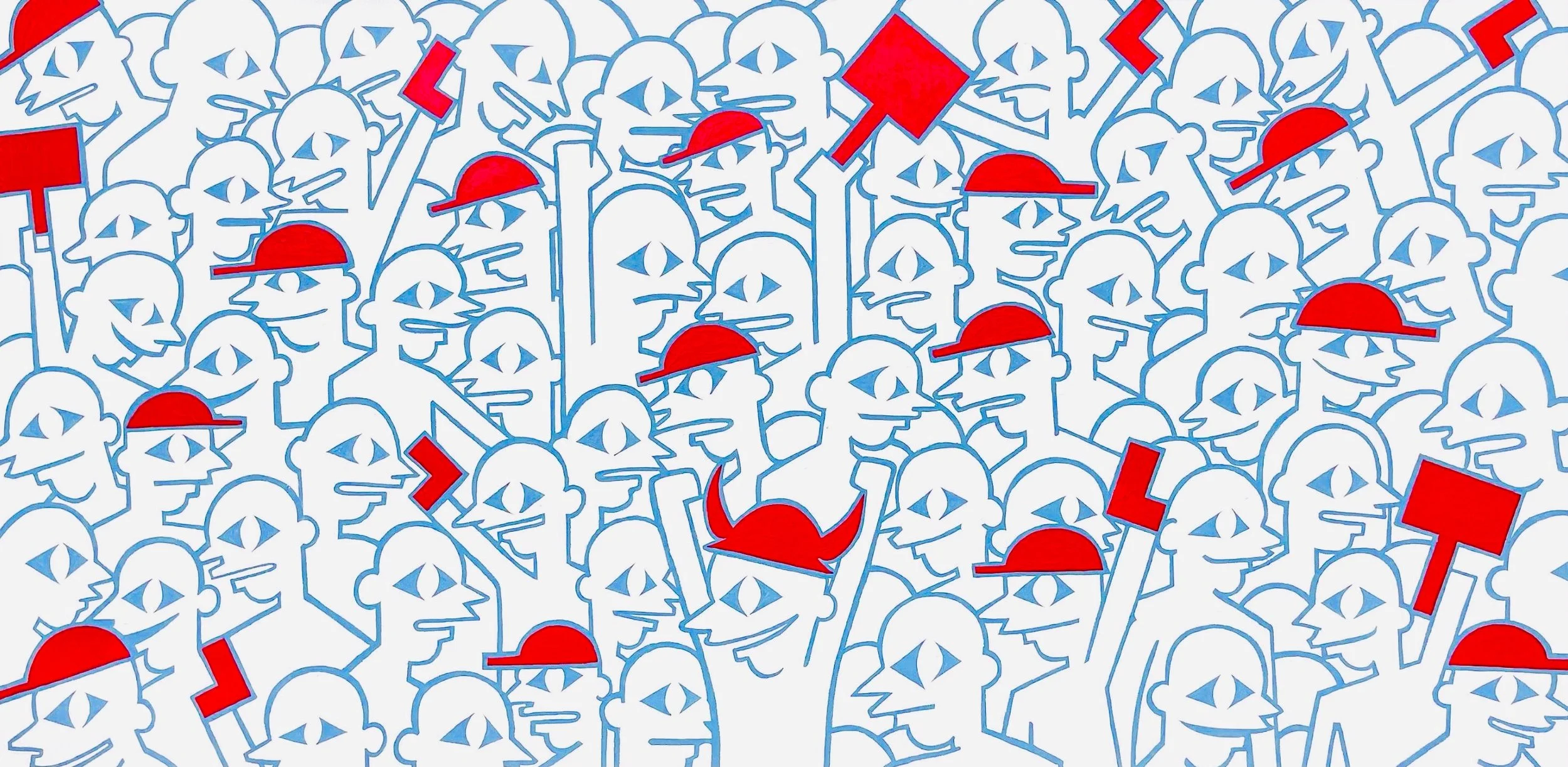The Insurrection: A Study in Mass Psychology and Aesthetic Clarity
My practice has always focused on the essential dialogue between societal pressure and human resilience, addressing complex subjects with a visual language that asserts both clarity and conviction. The painting, "The Insurrection," is my commentary on the January 6th assault on the U.S. Capitol, translating a moment of profound national rupture into a relentless and chilling visual pattern that examines the psychology of the mob.
The Methodology: Distilling Chaos into Form
The aesthetic decision to render the Insurrection in this manner, using clean, flat fields of color and thin blue linework, is deliberate. When an event is saturated with media coverage, chaos, and visceral imagery, the artist's task is often to step back and find the enduring structure within the noise.
I utilized my signature minimalist graphic style to achieve immediate, unmistakable impact. By stripping away photographic detail, I force the viewer to confront the incident not as a fleeting news clip, but as a formal study in collective delusion and political extremism. This Pop Art sensibility transforms the subject from historical event into universal, reproducible iconography, ensuring the work retains its critical edge long after the headlines has faded.
The Visual Argument: Collective Identity and Threat
The composition operates on the level of mass psychology, capturing the chilling effect of a collective overwhelmed by a single, destabilizing force:
Anonymity of the Mob: The high-density, wall to wall composition deliberately strips the figures of individual facial expressions and personality. They are outlined in thin blue lines against a stark white field, reducing them to a single, undulating unit. This erasure of individual detail emphasizes the destructive power of a mob, where personal accountability is dissolved into shared, frenzied action.
Overwhelming Scale: The tight cropping and complete lack of negative space are intentional. The crowd feels endless and suffocating, creating an immediate, visceral response where the viewer is forced to contend with the sheer, overwhelming volume of the uprising.
The Tension of the Red Motif
Color is deployed with extreme precision to carry the ideological and emotional weight of the event. The dominant palette of white and pale blue is violently interrupted by the stark, symbolic presence of red, all contained by the precise medium-tone blue linework:
The Uniform of Red Hats: The repeated red baseball caps serve as the core identifier. This visual shorthand grounds the work in the specific iconography of the movement while simultaneously reinforcing the idea of a self-selected, militant identity.
Implied Weaponry: The angular, aggressive red shapes held by some figures, resembling mallets, axes, or crude signage, are abstract representations of weapons or threats. Their hard, brutal geometry stands in sharp contrast to the simplified forms of the bodies, signaling the violent intent underlying the uniformity.
The Disruption of Iconography: The inclusion of the single figure wearing the horned red helmet, an image that became synonymous with the event, is submerged within the larger crowd. This placement is critical; it suggests that even the most extreme actors are merely symptomatic of the greater, anonymous, and far more pervasive collective force that fueled the chaos.
Cultural Anchors and Enduring Significance
The ultimate measure of a work resides in its capacity to transcend the immediate moment of its creation and establish itself as an enduring cultural artifact. By distilling the tumult of the Insurrection into a concise, formalized schema, this painting secures its position as a critical document of the 21st century American experience. It is not merely a record of an event, but an investigation into the anatomy of political fervor.
This painting holds a singular and powerful position in the dialogue of contemporary art. It serves as a visual anchor for any collection aiming to chart the complex intersection of modern politics and formal artistic innovation.
The work's compelling tension, its marriage of Pop inflected clarity with a subject of raw political volatility, demands sustained contemplation. It offers an undeniable commentary on the forces of populist mobilization and the broader political landscape. The powerful narrative embedded within this piece is one that will only grow in historical and cultural resonance.

